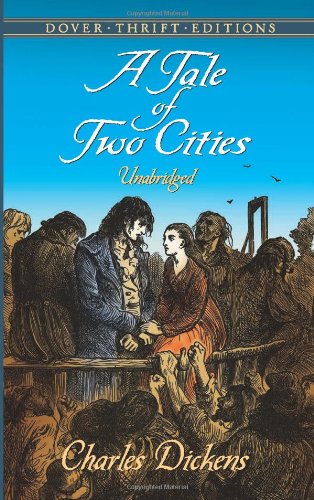All Nonfiction
- Bullying
- Books
- Academic
- Author Interviews
- Celebrity interviews
- College Articles
- College Essays
- Educator of the Year
- Heroes
- Interviews
- Memoir
- Personal Experience
- Sports
- Travel & Culture
All Opinions
- Bullying
- Current Events / Politics
- Discrimination
- Drugs / Alcohol / Smoking
- Entertainment / Celebrities
- Environment
- Love / Relationships
- Movies / Music / TV
- Pop Culture / Trends
- School / College
- Social Issues / Civics
- Spirituality / Religion
- Sports / Hobbies
All Hot Topics
- Bullying
- Community Service
- Environment
- Health
- Letters to the Editor
- Pride & Prejudice
- What Matters
- Back
Summer Guide
- Program Links
- Program Reviews
- Back
College Guide
- College Links
- College Reviews
- College Essays
- College Articles
- Back
A Tale of Two Cities by Charles Dickens
Nineteenth-century British author Charles Dickens tells, as his book’s title suggests, a tale of two cities - London and Paris, at the time of the French Revolution. Dickens demonizes the revolution and its vengeful “mob” using vivid images of bleeding Paris and the unfortunate souls who walk on its streets stained red.
Increasingly throughout the book, the values of community and family are pitted against the national values of revolution that stagnate in the French air. Using third-person omniscient point-of-view, Dickens leaps between the two cities to provide a complete picture of the Revolution and the different lives tangled within it. In the years before the Revolution, gentle, warmhearted Lucie Manette “weaves the golden thread” that binds her family, friends and neighbors in the cozy Soho square of London. Several hundred miles south in Paris, Madame Defarge, “imbued from her childhood with a brooding sense of wrong,” knits an expansive network of revolutionaries committed to severing any ties or heads associated with the Ancien Régime. Through a series of coincidences, the two women become regretfully familiar with each other, and their values and friends collide.
At seventeen, Lucie meets her father, Dr. Alexandre Manette, former Bastille inmate, whom she has presumed to be dead, for the first time. She receives the mentally disturbed man with heretofore unknown compassion, seemingly stretching the boundaries of the heart, and restoring his sanity. The two become inseparable. Additionally, Lucie is joined in matrimony with the gentlemanly Charles Darnay and in friendship with the businessman Jarvis Lorry and piteous drunkard Sydney Carton. Sydney struggles with alcohol and his unrequited love for Lucie, the latter feeding his troubles with the former. Together, along with maid Miss Pross and child Little Lucie, the Manette-Darnay clan strives and thrives in its little London community, generating and reciprocating the family values that keep its members close.
Due to a mishap involving Charles’ noble family background in France, the clan is swept into the tornado of revolution, carrying them across the English Channel. Madame Defarge and the mob relentlessly pursue their vision of justice, including death to the Darnays and all their sympathizers, for “it was nothing to [them], that an innocent man was to die for the sins of his forefathers; [they] saw, not him, but them.” The strength of the golden thread of the victim family is tested again and again until the novel’s bittersweet, abrupt and bloody end.
With wit as sharp as La Guillotine and passion as strong as that belonging to her henchmen, Dickens has made a palpable and consummate recreation of revolutionary Paris. Through the open wound of the city itself, he has secreted dirt, sweat and blood onto the book’s pages. Dickens’ readers ride the raging tide of fervor, revenge and national pride and are left shaken and indelibly influenced - just as he has intended for them to be. He has written this emotionally turbulent novel to teach how the reckless, uprisen masses endanger the values of a close-knit community, for a lesson is most effectively received by a stricken heart.
Similar Articles
JOIN THE DISCUSSION
This article has 0 comments.

